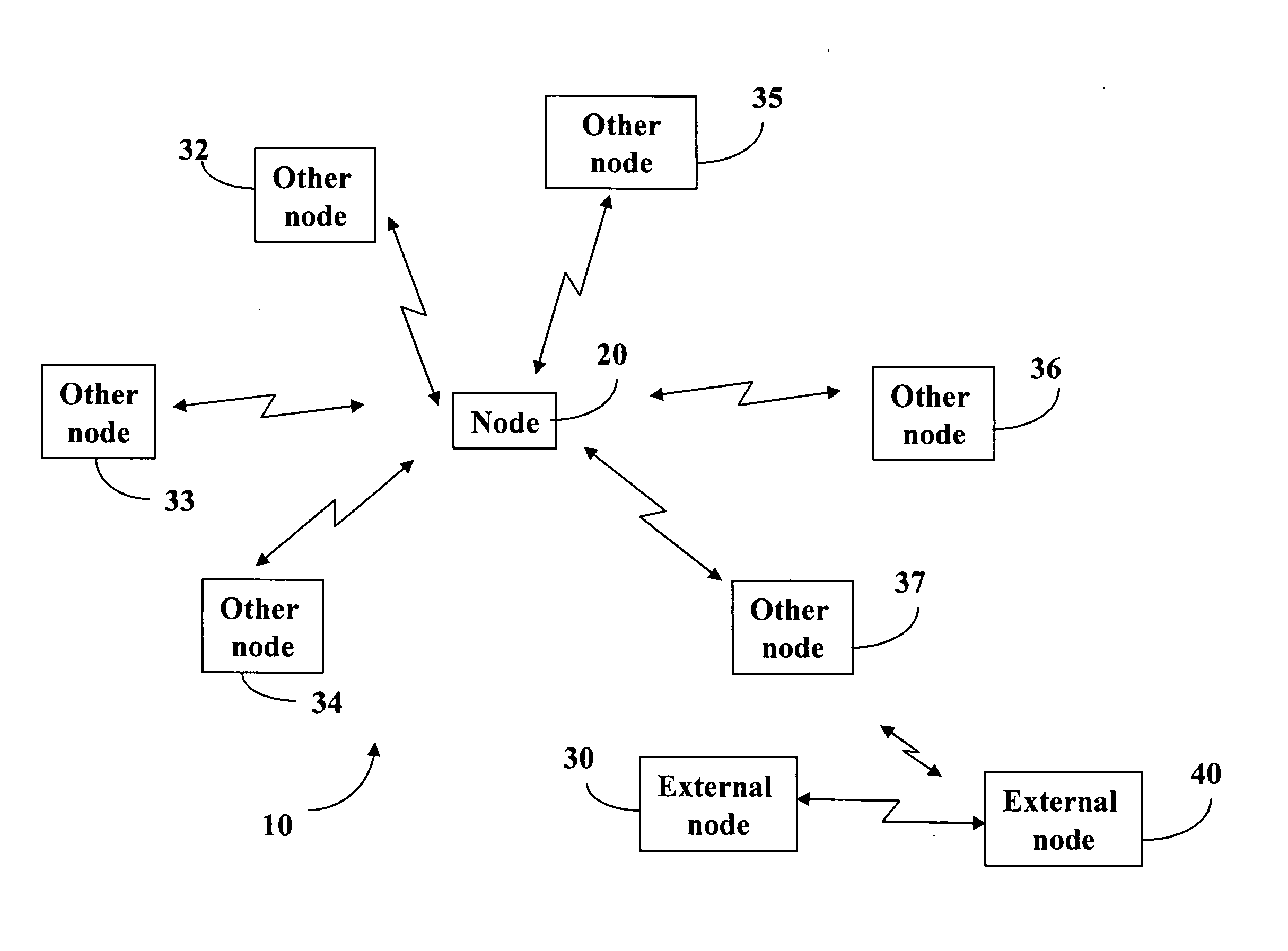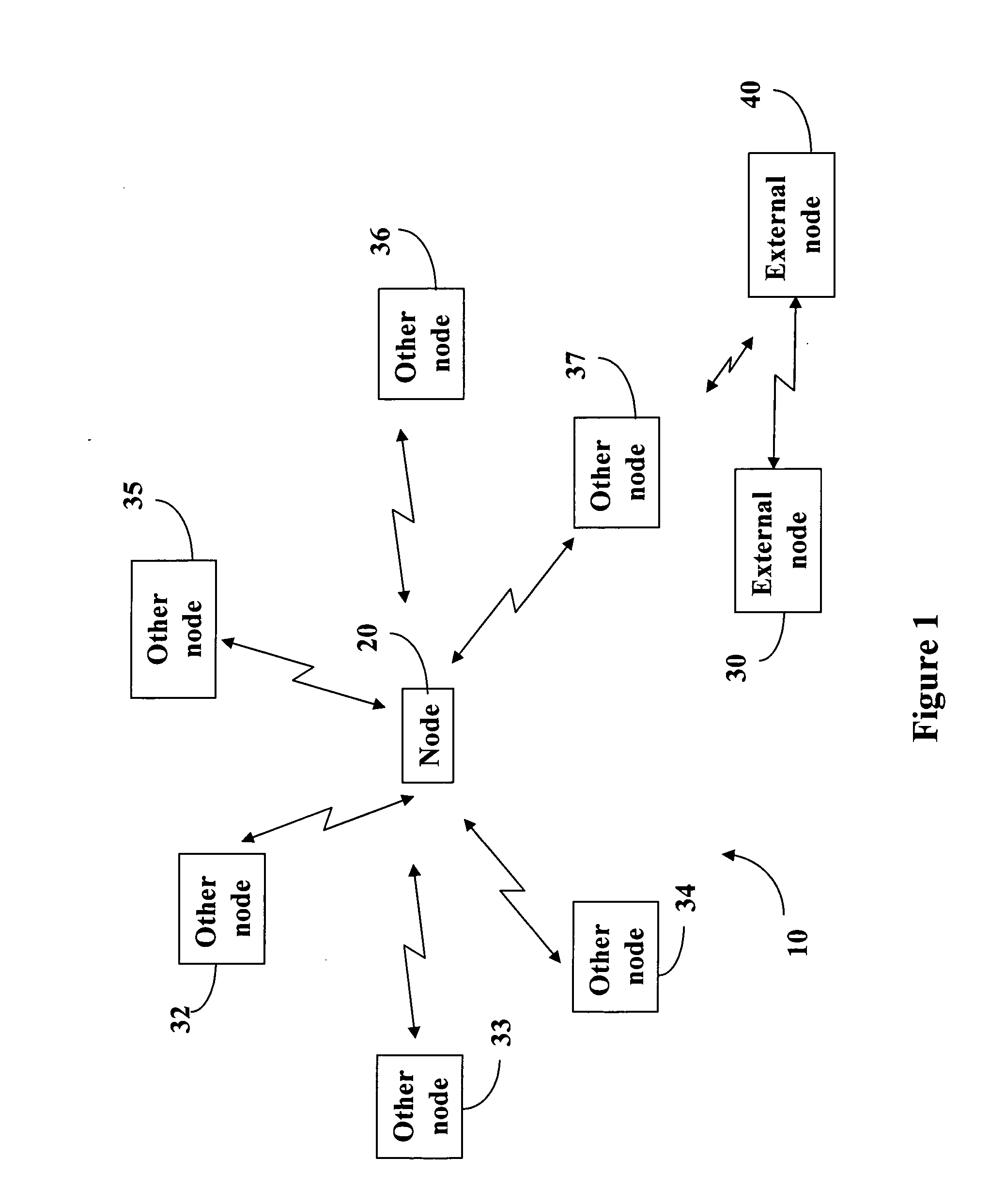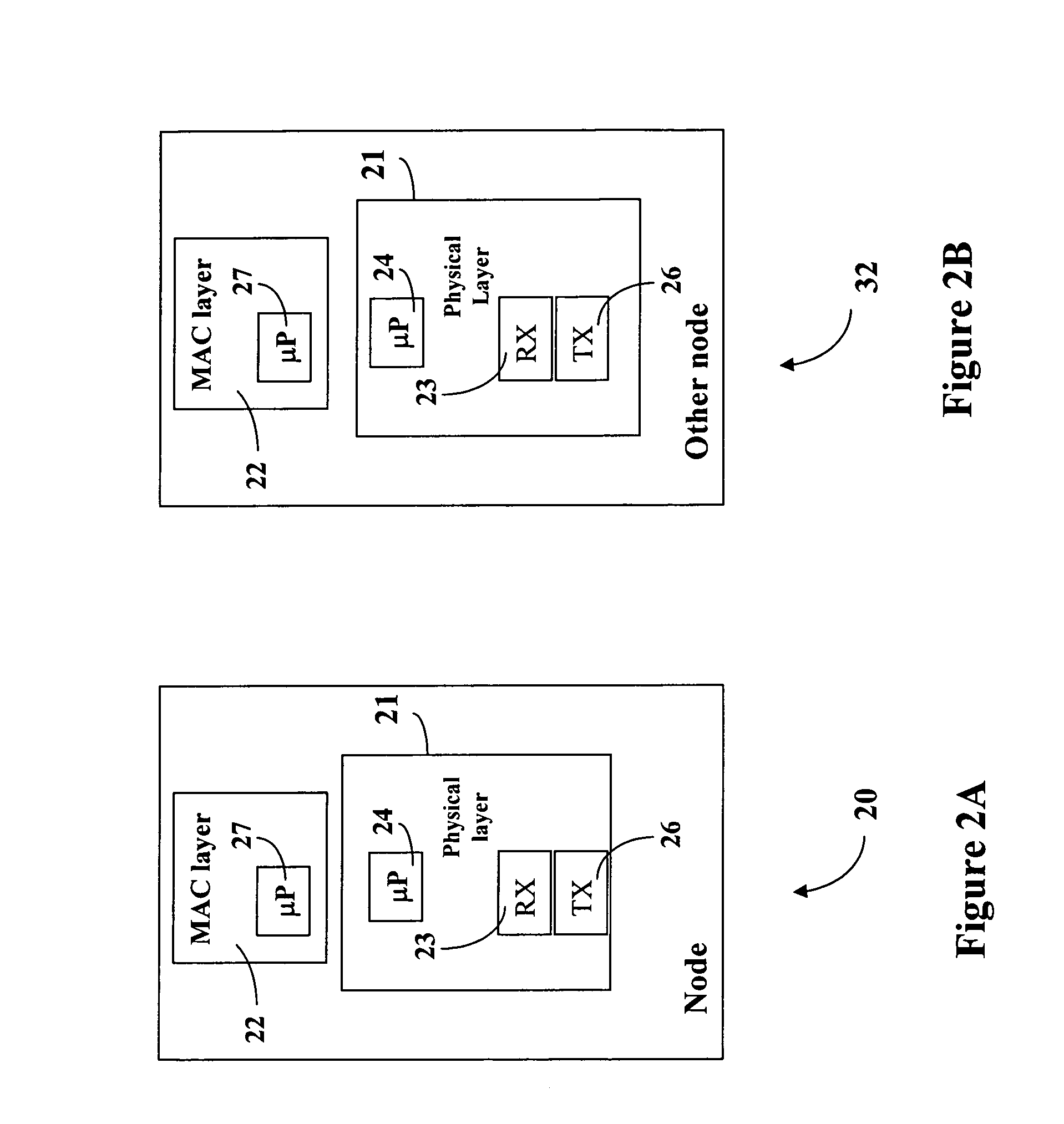System and method to perform stable distributed power control in a wireless network
- Summary
- Abstract
- Description
- Claims
- Application Information
AI Technical Summary
Benefits of technology
Problems solved by technology
Method used
Image
Examples
Embodiment Construction
[0017] In the following detailed description, reference is made to the accompanying drawings, which form a part hereof, and in which is shown by way of illustration specific embodiments in which the invention may be practiced. These embodiments are described in sufficient detail to enable those skilled in the art to practice the invention. The following detailed description is not to be taken in any limiting sense and the scope of the present invention is defined only by the claims and equivalents thereof. In the embodiments of the present invention, a node, such as a base station in a cellular wireless system, dynamically controls the total power level transmitted from the node at any time. The dynamical control is not regulated by a higher level controller in the communication system although the transmit power used is subject to the limits of the transceiver, the maximum power it can transmit at, and the accuracy of the signals at different power levels.
[0018]FIG. 1 is a box dia...
PUM
 Login to View More
Login to View More Abstract
Description
Claims
Application Information
 Login to View More
Login to View More - R&D
- Intellectual Property
- Life Sciences
- Materials
- Tech Scout
- Unparalleled Data Quality
- Higher Quality Content
- 60% Fewer Hallucinations
Browse by: Latest US Patents, China's latest patents, Technical Efficacy Thesaurus, Application Domain, Technology Topic, Popular Technical Reports.
© 2025 PatSnap. All rights reserved.Legal|Privacy policy|Modern Slavery Act Transparency Statement|Sitemap|About US| Contact US: help@patsnap.com



